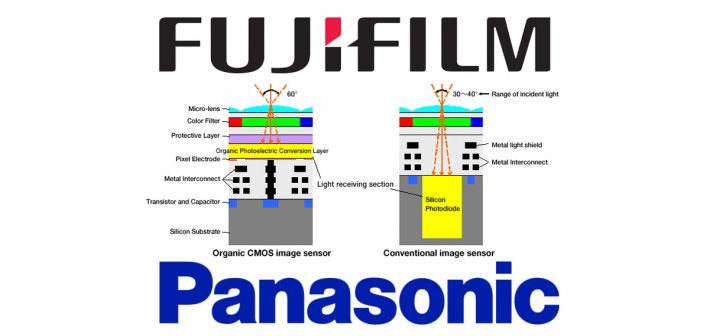In practice, in place of the photodiodes in the silicon sensor, it is positioned in a layer of photosensitive organic material, which operates as a collector of photons; below it is placed a layer of silicon, built with CMOS classical techniques able to operate as a charge collector.
Since the transition to digital evolution of the sensors has been steady and has brought fruits that every time a few years ago seemed impossible. Resolutions up to 50 megapixels on an SLR camera and sensitivity that come to be measured in millions. By CCD it has gone largely to CMOS, but the new frontier is already upon us and sees Panasonic and Fujifilm in the forefront. We are speaking of organic sensor that uses elements not only based on silicon, but also on carbon chemistry.
In practice, instead of the photodiodes in the silicon sensor is positioned in a layer of photosensitive organic material, which operates as a collector of photons; below it is placed a layer of silicon, built with CMOS classical techniques able to operate as a charge collector. In this way, the photoelectric conversion functions and those of signal reading may operate on different circuits, with possible very interesting applications. For example, it is possible to vary in a simple way the tension of the organic photosensitive layer, modulating its sensitivity, without going to create problems that the amplification target in the photodiodes, which enclose in themselves be part of the photoconversion, is that of reading the signal. Fujifilm is involved in the project in the development of the photosensitive organic layer.

The organic layer then has characteristics that make it more performant natively in the design shown by Panasonic, managing to collect photons also with angles of incidence of 60°, while current conventional sensors arrive at 30°/40° in general. The organic layer can be used to particular structures, such as one of those proposals by Panasonic that for each pixel includes two different types of cells: a high sensitivity, the other with a high level of saturation. In this way, it is possible to get to a dynamic range of 123dB on single exposure (100 times that of a normal sensor), a result that conventional sensors can only be obtained by combining different exposures, a technique that does not allow the resumption of moving images.

Even in the single-cell version the organic sensor should be much more sensitive and thanks to the separation of the conversion circuits and signal collection, enable in a simple way the so-called global shutter off spaces the photoconversion layer, while the lower continues its reading in the traditional way. In this way it eliminates in a simple way the effect of the rolling shutter, which represents moving objects with obvious distortions due to the method of reading (for example, example line by line) of the sensors.

Panasonic has gone even further and by exposure to variable sensitivity declares porter systems give the ability to adjust the direction of a movement with a step Multi-variable sensitivity as evidenced by the moving ball figure knowing the sequence exposure (first low and then high) it is possible to understand that the ball is moving from left to right. This feature could become very interesting for artificial intelligence in autonomous driving machines, one of the most interesting markets for this type of organic sensor technology, given its ability to see in the dark, where traditional sensors are not sensitive enough.

